
Camp Dennison
"Camp Dennison, sixteen miles above Cincinnati, on the banks of the Miami River, General Cox commanding-…

Battle of Pea Ridge
"Battle of Pea Ridge, Ark., fought March 6th, 7th and 8th, 1862, between the Federal forces, 13,000…
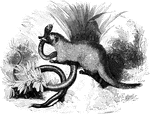
Eqyptian Ichneumon
Species of the genus Mangouste. This animal bears a close resemblance to the weasel tribe,…

Zouaves
"Encampment of Colonel Ellsworth's New York Fire Zuoaves, on the heights opposite the Navy Yard, Washington,…

Hilton Head
"Expedition to Port Royal- Government buildings erected on Hilton Head, S. C., by the Federal forces…

Combat at Yazoo River
"Desperate naval combat between the Confederate iron-plated ram Arkansas and the Federal gunboat…

Battle of Savages Station
"Battle of Savages Station. Brigadier General Smith's division hotly engaged with the enemy, at noon,…

Battle of Cedar Mountain
"Battle of Cedar Mountain, fought Saturday, August 9th, 1862, between the Federal troops commanded by…

Bellaire, Ohio
"Bellaire, O.- Steamboats conveying troops and munitions of war for the Federal forces on the Great…
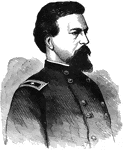
General Alexander S. Webb
"General Webb, born in New York city, February 15th, 1835, was graduated from the United States Military…

Destruction of Merrimac
"Destruction of the Confederate ironclad steamer Merrimac, blown up by its commander, on the…

Commencement of Bull Run
"The Confederate forces under General Jackson advancing upon the Rapphannock Station at the river. Federal…
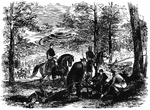
Battle of Corrick's Ford
"Battle of Carrick's Ford, Western Virginia- discovery of the body of General Garnett, by Major Gordon…

Battle of White Oak Swamp Bridge
"Battle of White Oak Swamp Bridge, Monday June 30th, 1862- Ayres's, Mott's and Randall's batteries checking…

Fort Runyon
"Section of Fort Runyon, Va., guarding the road to Alexandria, occupied by the Twenty-first Regiment,…
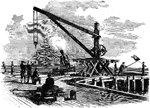
Sawyer gun
"Practicing with the celebrated Sawyer gun on the Confederate batteries at Swell's Point, near Norfolk,…

General Christopher C. Augur
"General Augur, born in New York in 1821, was graduated from the United States Military Academy in 1843.…

Bird's Point
"View of the fortifications erected by the Federal troops at Bird's Point, MO., opposite Cairo, Ill."—…

Fort Thompson
"Bombardment and capture of Fort Thompson, thirteen guns, near New Berne, on the Neuse River, by the…

Pocotaligo Bridge
"The Federal troops under Generals Brannan and Terry driving the Confederates under beauregard across…

General George W. Morgan
"General Morgan, born in Washington County, Pa., September 20th, 1820, died at Old Point Comfort, Va.,…

The Forlorn Hope
"'The Forlorn Hope.' Volunteers storming party, consisting of portions of the Seventh Michigan and Nineteenth…
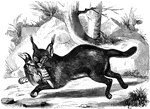
Caracal
"The Caracal, or Siyah Ghush, F. Caracal, is supposed by some to be the lynx of the ancients.…
Fort Clinch
"Exterior view of Fort Clinch, on Amelia Island, Fla., commanding the Harbor of Fernandina, captured…
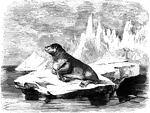
Sea Bear
"It is the size of a large bear; girth at the sholder, five feet, near the tail, twenty inches; fur…
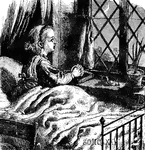
Twinkle, Twinkle, Little Star
Twinkle, twinkle, little star. How I wonder what you are! Up above the world so high. Like a diamond…
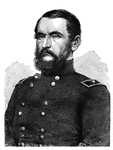
General John James Peck
"General Peck, born at Manlius, N. Y., January 4th, 1821, died at Syracuse, n. Y., April 28th, 1978,…
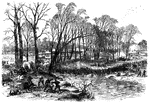
Battle of Stone River
"Battle of Stone River, Tenn. The decisive charge of General Negley's division across the river- the…

Battle of Antietam
"Battle of Antietam. The centre and right wing of General McClellan's Army, commanded by Generals Hooker,…

Siege of Vicksburg
"Siege of Vicksburg- the fight in the crater of Fort Hill after the explosion, June 27th, 1863. Our…
Fort Taylor
"Fort Taylor, Key West, Fla. Key West, the most western of the Pine Islands, is about sixty miles southwest…

Battle of Chancellorsville
"Battle of Chancellorsville, Va., Friday, May 1st, 1863. We give a fine sketch of the point where the…
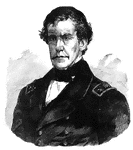
Rear Admiral Charles Wilkes
"Rear Admiral Wilkes, born in New York city, April 3rd, 1798, died in Washington, D. C., February 8th,…

Banks Expedition
"The Banks Expedition- scene on the hurricane deck of the United States transport North Star-…

Fort Hindman
"The investment of Fort Hindman, Arkansas Post, Ark., by the Federal troops under General McClernand,…
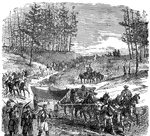
Pontoon Bridge
"The Pontoon bridge 'On The March'- the pontoon wagons on their way from Aquia Creek to the Rappahannock.…

Attack on Confederate Works
"Siege of Vicksburg, attack on the Confederate Works, May 22nd, 1863. Our sketch represents the terrible…

Confederate Batteries
"Fredericksburg, Va., and the Confederate batteries and pickets, as seen from Falmouth Heights, headquarters…

Mahaska Crew
"The crew of the United States gunboat Mahaska, Captain Foxhall A. Parker destroying the water…

Confederate Invasion
"The Confederate invasion of Maryland and Pennsylvania. The Confederate cavalry crossing the Potomac,…

Fort Calhoun
"Fort Calhoun, on the ripraps, situated between Fortress Monroe and Sewell's Point, in Hampton Roads,…

Cumberland Gap
"Cumberland Gap and Heights, Tenn., from the Kentucky side. Cumberland Gap was a place of such importance…

Loudon Heights
"View from Loudon Heights, Va., showing Harper's Ferry, Maryland Heights, Bolivar, etc. Harper's Ferry,…

Harrison Mansion
"The old Harrison Mansion, Harrison's Landing, Va., the birthplace of President William Henry Harrison,…
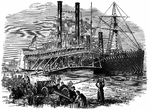
Banks Expedition
"The Banks Expedition- scene on the levee, Baton Rouge, La. Contrabands unloading military stores from…
Fort Moultrie
"Siege of Charleston, S. C. Bombardment of Fort Moultrie and Batteries Bee and Beauregard by the monitors…

Hooker's Battle
"The war in Tennessee. Hooker's Battle above the clouds, and capture of the Confederate position on…

War in Georgia
"The war in Georgia- Stevenson, Ala., depot for General Rosecrans's Army. The campaign of General Rosecrans…

Fort Stevens
"The operations near Washington, scene of the fight in front of Fort Stevens, July 12th-13th, 1864.…

War in Louisiana
"The war in Louisiana. General Banks's army, in the advance on Shreveport, crossing Cane River, March…

War in Virginia
"The war in Virginia. General Butler's lines south of the James, Va., with troops in position near the…

Valley of the Shenandoah
"Sheridan's campaign in the Valley of the Shenandoah- Battle of Summit Point, Sunday, August 21st, 1864."—…

Hancock Monument
"The point where major General Winfield Scott Hancock was wounded."— Frank Leslie, 1896
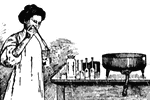
Testing Milk
A woman putting milk into a test bottle. The pipette is held at an angle with the test bottle and its…
bacteria and cambric needle
The point of the finest cambric needle, with a particle of dust (above) and bacteria (below) for scale.
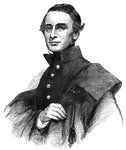
Major Robert Anderson
"Major Robert Anderson, the commander of Fort Sumter at the time of its fall, was born in Kentucky in…

Sixteenth Regiment
"The Sixteenth Regiment, Ohio Volunteers, under Colonel Irwine, crossing the tray run viaduct, near…

first interview
Site of the first interview between Gates and Burgoyne. This view is taken from the turnpike, looking…

